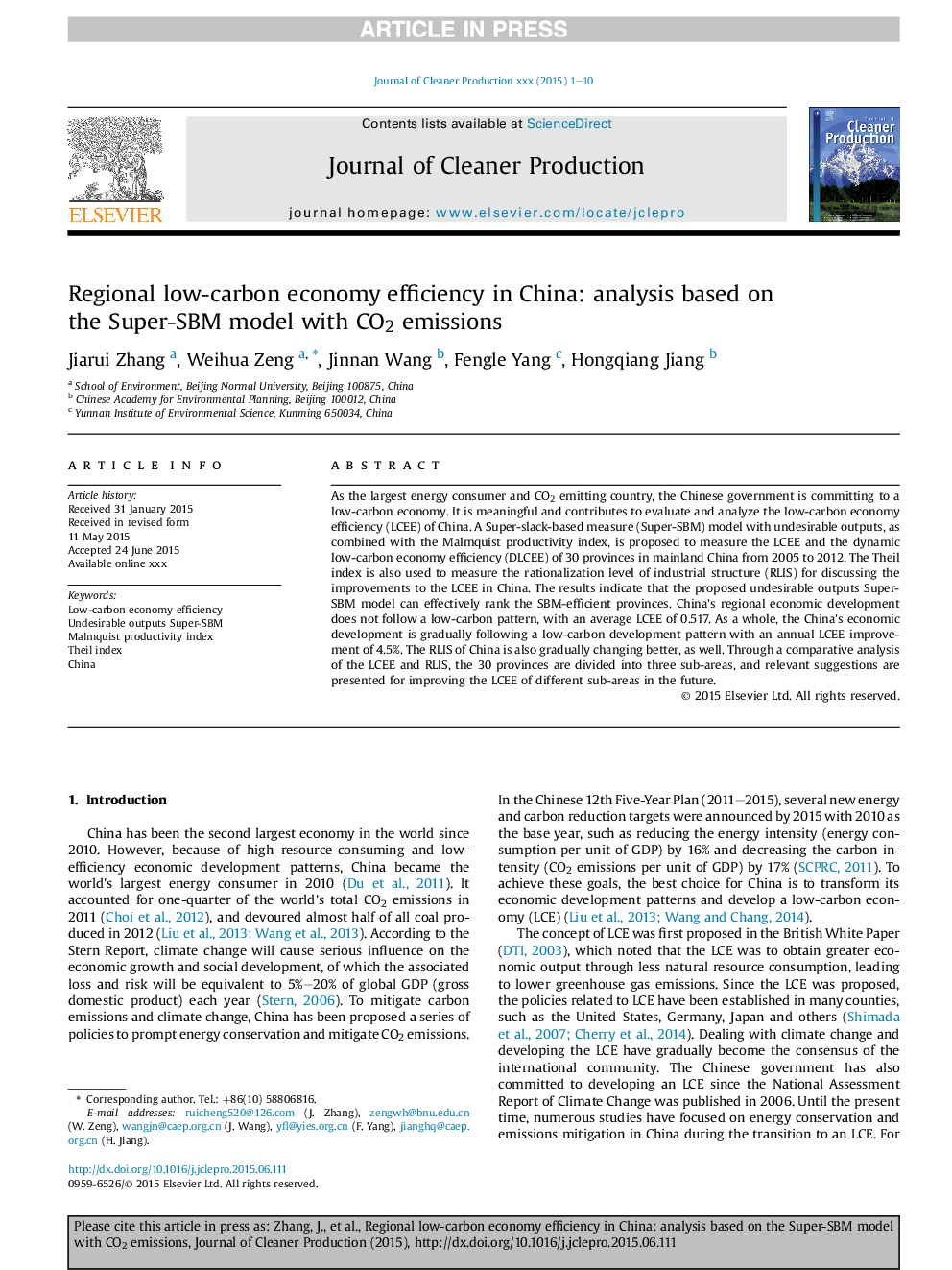| Article ID | Journal | Published Year | Pages | File Type |
|---|---|---|---|---|
| 5479560 | Journal of Cleaner Production | 2017 | 10 Pages |
Abstract
As the largest energy consumer and CO2 emitting country, the Chinese government is committing to a low-carbon economy. It is meaningful and contributes to evaluate and analyze the low-carbon economy efficiency (LCEE) of China. A Super-slack-based measure (Super-SBM) model with undesirable outputs, as combined with the Malmquist productivity index, is proposed to measure the LCEE and the dynamic low-carbon economy efficiency (DLCEE) of 30 provinces in mainland China from 2005 to 2012. The Theil index is also used to measure the rationalization level of industrial structure (RLIS) for discussing the improvements to the LCEE in China. The results indicate that the proposed undesirable outputs Super-SBM model can effectively rank the SBM-efï¬cient provinces. China's regional economic development does not follow a low-carbon pattern, with an average LCEE of 0.517. As a whole, the China's economic development is gradually following a low-carbon development pattern with an annual LCEE improvement of 4.5%. The RLIS of China is also gradually changing better, as well. Through a comparative analysis of the LCEE and RLIS, the 30 provinces are divided into three sub-areas, and relevant suggestions are presented for improving the LCEE of different sub-areas in the future.
Related Topics
Physical Sciences and Engineering
Energy
Renewable Energy, Sustainability and the Environment
Authors
Jiarui Zhang, Weihua Zeng, Jinnan Wang, Fengle Yang, Hongqiang Jiang,
